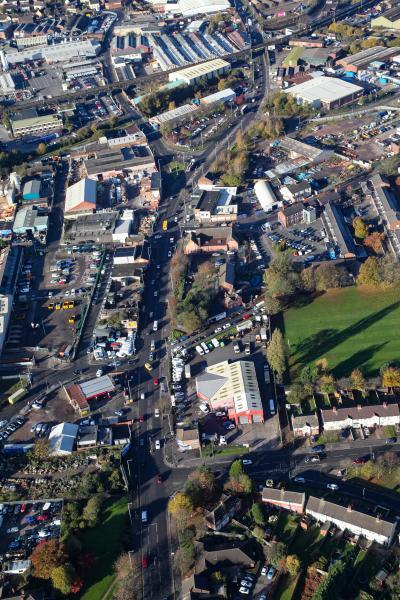The City East Gateway project covers the A454 Willenhall Road corridor between the city centre and Walsall, which also provides connections to the Black Country Route and the M6 at Junction 10.
The long term plans aim to redevelop and improve traffic flow on what is a main route in and out of the city.
The scheme will also provide essential connectivity and accessibility to and between the city centre and priority housing and employment sites identified for regeneration, including Canalside, East Park and the Neachells industrial area. It also represents core access to the motorway network and surrounding region for freight, business and visitor trips.
The route, which sees more than 20,000 vehicles pass through the gateway every day, has been earmarked as a growth area in need of improvements in the region’s Well-Connected Communities Transport Capital Programme 2023-24 report.
The A454 City East Gateway Phases 1 and 2 extend from Bilston Street Island through Middle Cross and Lower Horseley Fields, up to the Chillington Fields junction. The scheme also incorporates Walsall Street and Lower Walsall Street.
Cabinet Resources Panel has now approved a supplementary capital budget of £400,000 for the development of phases 1 and 2 - fully funded by a City Region Sustainable Transport Settlement (CRSTS) grant - to cover early contractor engagement and the removal of vegetation and trees.
The project was approved by the West Midlands Combined Authority (WMCA) in December 2022. Phases 1 and 2 have provisionally been allocated £6 million of the total for the A454 City East Gateway corridor.
The West Midlands has received £1.05 billion from CRSTS – £18.2 million of which has been allocated to the A454 corridor including the City East Gateway Willenhall Road section.
Councillor Craig Collingswood, Cabinet Member for Environment and Climate Change at City of Wolverhampton Council, said: “The scheme looks to deliver enhancements to access for all road users, with active travel infrastructure and consistent journey times for public transport and other vehicles.
“Supporting opportunities for residents and visitors to make their first choice for journeys a healthy and green one, but ensuring essential access for drivers is also supported.
“This programme will enable long term transformation for this part of the city – and early projects will act as a catalyst for change, prosperity and regeneration of the area bringing important social, economic and environmental improvements for the people of East Park.”
A refreshed outline business case will be submitted to the Department for Transport in late 2023 and a decision to confirm further CRSTS funding for the whole corridor is expected later in the year or early 2024.
